Back in October, I set off for a two-hour circular walk from the village of Merthyr Mawr in south Wales, which took in two castles, a beach and a nature reserve.
The walk took me through the picturesque village to the ruins of Candleston Castle and across the sand dunes of Merthyr Mawr to the coast, returning via the dunes, the River Ogmore and Ogmore Castle.

I parked my car in the small car park at Merthyr Mawr and set off for a short stroll through the gorgeous village, passing pretty thatched cottages and St Teilo’s Church (below).
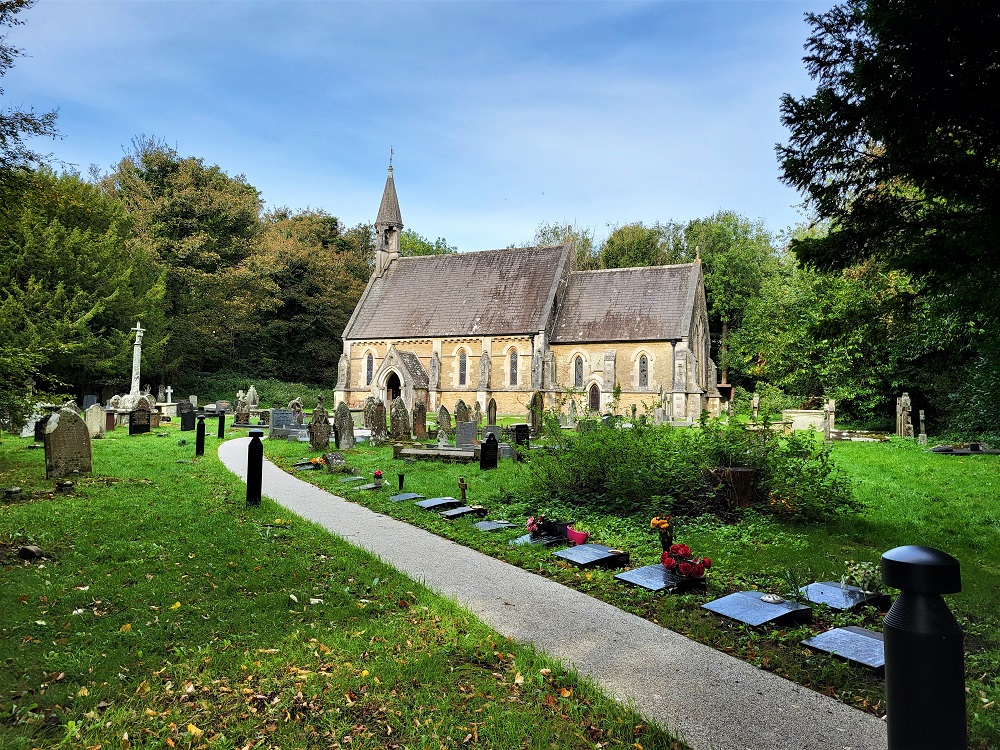
On leaving the village, I continued to follow the road, walking along the grassy verge, until I reached nearby Candleston car park.
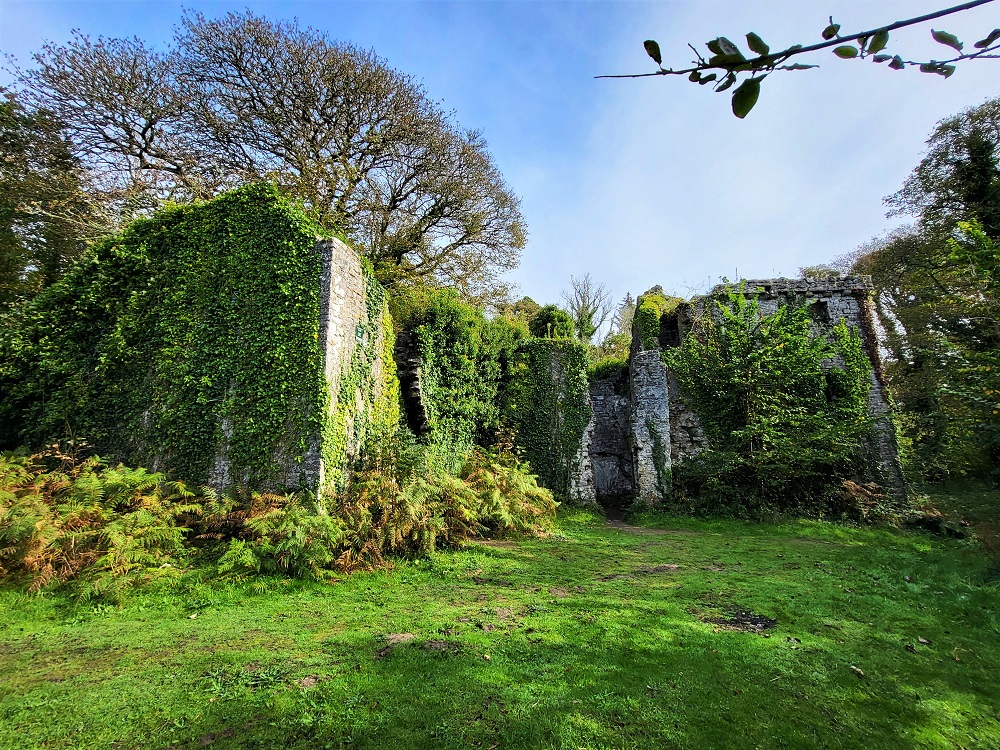
Here, I veered off up a mound behind the car park to take a look at Candleston Castle (above).
The ruined castle is almost completely hidden from view and if you didn’t know it was there, you could easily walk right past it (below).
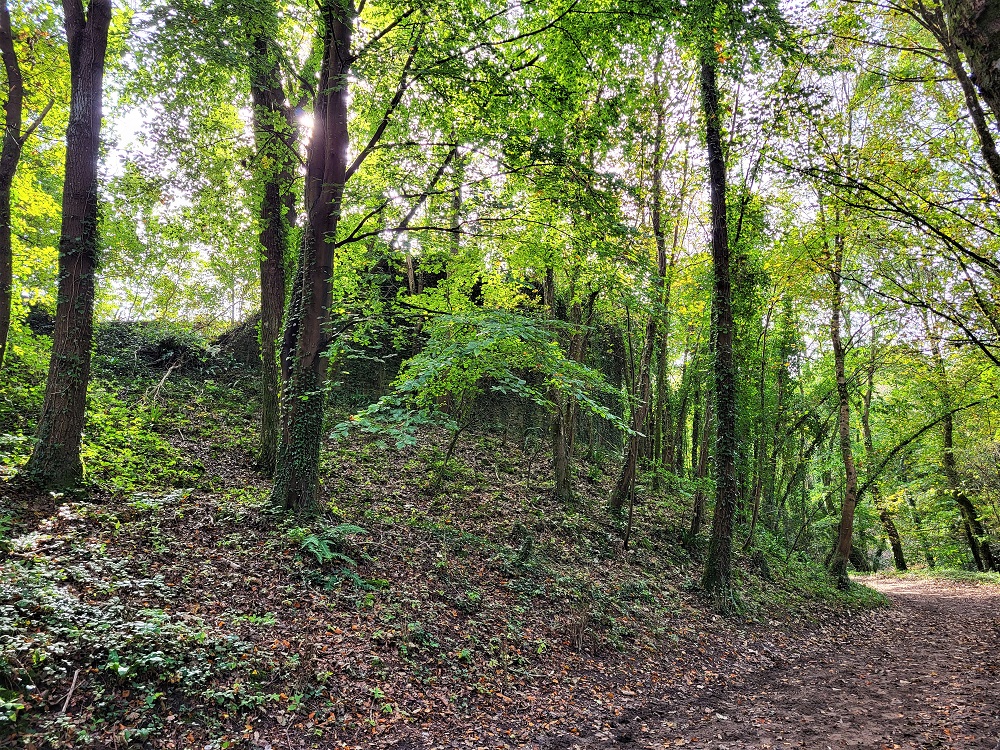
The castle’s history is uncertain but it’s thought it may date as far back as 1320, when it was possibly built by the fabulously named Robert de Canteilupe III.
It was remodelled extensively in the 15th century and remained in private hands until the 1800s.
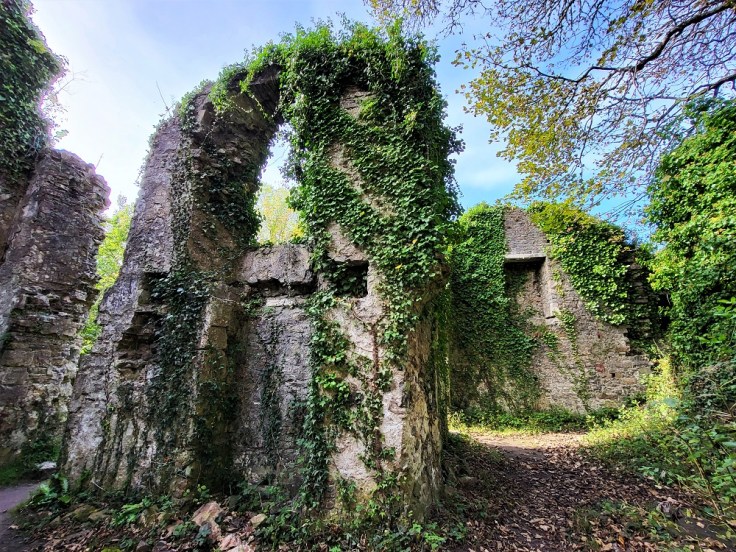
In 1808, its then-owner Sir John Nichol sold it and the castle was used as a farm house for a bit before being abandoned. It’s been a ruin ever since.
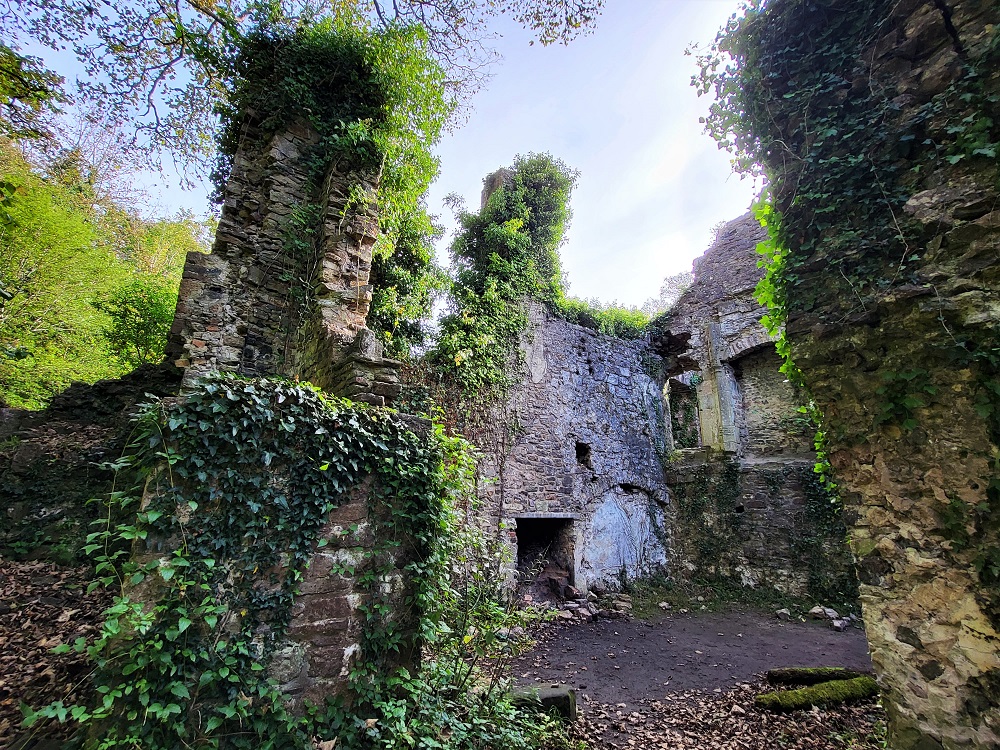
I started my visit by exploring the ground floor, where I had a great time clambering among the ruins and exploring the castle’s many nooks and crannies.

The castle is slowly being reclaimed by nature, so there aren’t lots of decorative features to be seen, but I did spy a lovely 15th century fireplace (above).

From the ground floor, I climbed up the almost non-existent staircase (above) to the first floor, where you could look around one of the rooms (below).

Given the state of the castle, I was somewhat surprised you’re allowed to wander around as much of it as you are, but I was glad there weren’t any restrictions as it’s a fabulous place to explore.
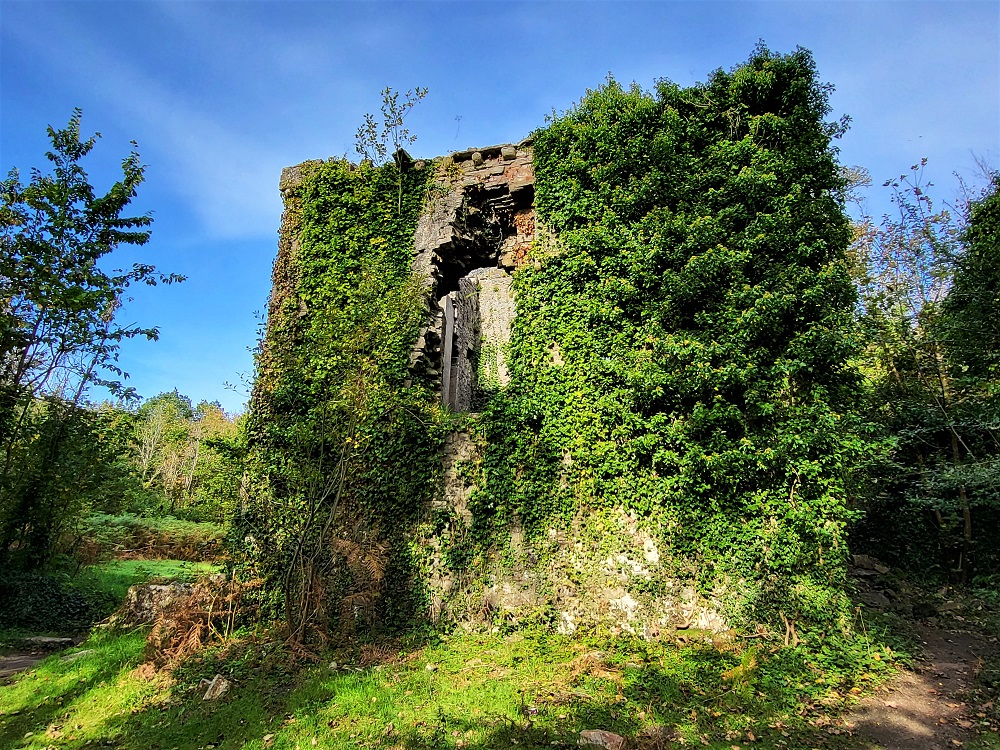
It’s very much the epitome of a hidden gem and it reminded me of something out of an Indiana Jones-type movie, an enchanting, forgotten ruin concealed by the woods, overrun by plants.
Having explored every last inch of the castle, I headed back to the path and followed it in the direction of The Big Dipper, otherwise known as the second largest sand dune in Europe (below).

I first visited Merthyr Mawr on a school trip when I was about seven years old, where we spent an amazing afternoon sledging down The Big Dipper.
I didn’t spot any sledges during my walk, but there were a few children having a whale of a time sprinting and rolling down the dune.

I trudged through the sand to the top of The Big Dipper, where I stopped to admire the superb views (above).

I then set off along a sandy path behind The Big Dipper (above) in the direction of the south Wales coast.

The path was fairly uneven underfoot and quite narrow in places, so you had to watch where you were stepping, but the views over the nature reserve and the coast were spectacular (above).
After a short while, the path dipped down sharply and I followed the steep path down to the dunes below.

Crossing a stone stile, I made my way through some small dunes and a tiny wood, before coming to another set of gates and stiles.

Along the way, I spotted a fair few mushrooms growing on the ground and stopped to take some photos (above).

After crossing one of the stiles, I continued to follow the path through the nature reserve, as the ground became increasingly sandier and the dunes more pronounced.

One of the dunes’ biggest claims to fame is that David Lean’s epic Lawrence of Arabia was filmed here, the vast expanse of sand doubling as the Arabian Peninsula.
Having been to Wadi Rum, where parts of the film were set, it seems crazy to me that this photogenic nature reserve in south Wales doubled for the desert, as the two are so very different.
But apparently, the blockbuster was really filmed here and it isn’t just a local legend.

I continued trekking through the sand until I reached a long sandy beach, where there were a few people surfing in the water.
Because the beach at Merthyr Mawr isn’t the easiest to get to, it tends to be much quieter than the other beaches along the south Wales coast, which makes it a wonderful place to while away an afternoon.

After a short stroll along the beach, I popped myself down on the sand to enjoy a spot of lunch, some people watching and to read my book.
It was very peaceful and I had a great time watching the world go by, relaxing in the warm sunshine with my book.

After an hour or so, I picked myself up off the beach and headed back through the sand dunes, but this time veering to the right, closer to the Ogmore Estuary.

I clambered up and over a large dune before dropping sharply down to follow a sandy path through the grassy dunes (above).
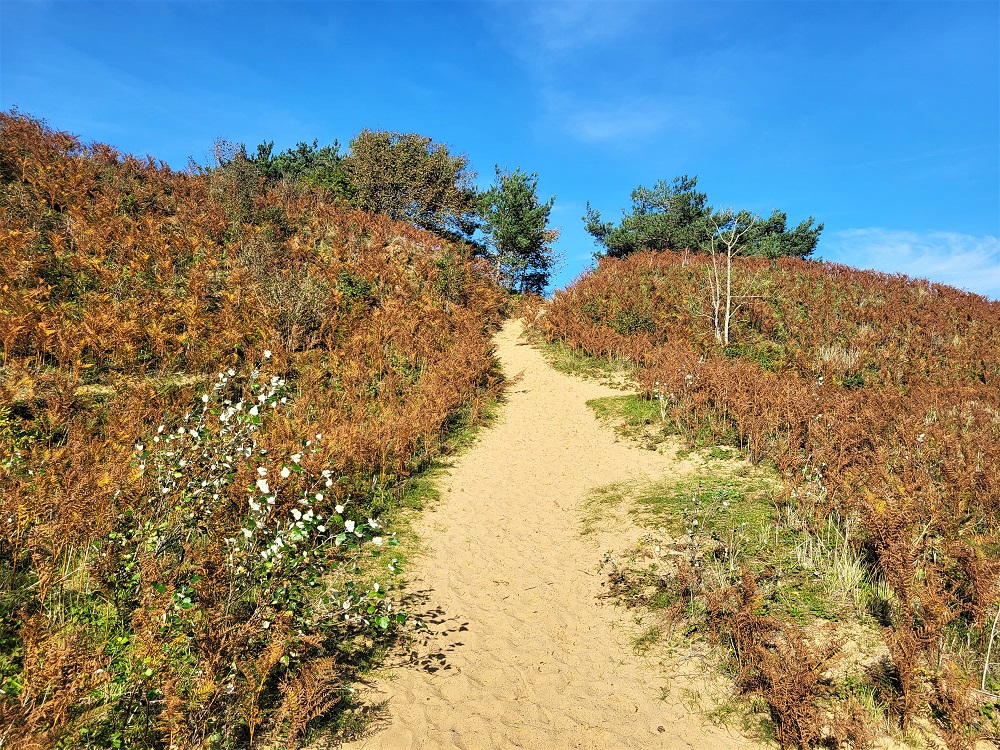
I followed the path up and over the dunes, past some lovely, rust-coloured ferns (above), until I found myself back at Candleston car park.
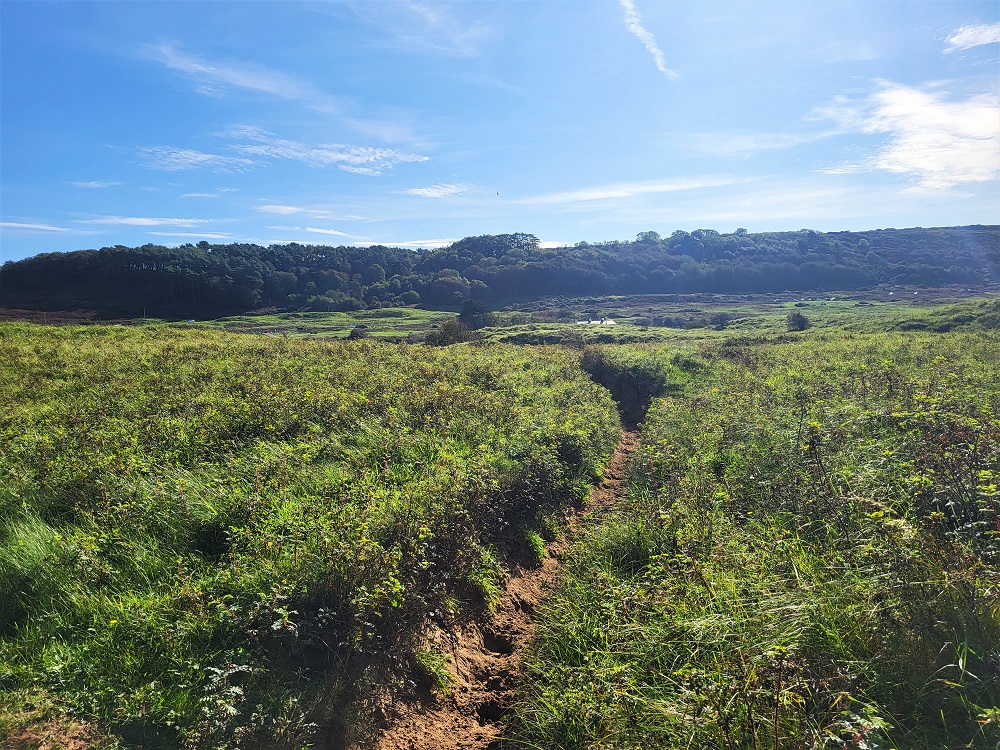
Here, I stopped to buy myself a cup of tea from the small coffee van, then followed the signs for the Wales Coast Path, in the direction of the River Ogmore (above).
As I approached the water, I turned to the left to follow the path along the river, which I hoped would take me back to Merthyr Mawr.

After a short while, I spotted a curious sign that said ‘No footpath ahead’ but as there was no explanation, I decided to keep going.
Not long afterwards, a woman on horseback came up alongside me and said, “Do you know this path leads directly to the river up ahead?”
The woman explained the river was shallow and she didn’t think I’d have any trouble crossing it.
I had my waterproof hiking sandals on, so was fortunately dressed appropriately for wading through a river and decided to chance my luck.
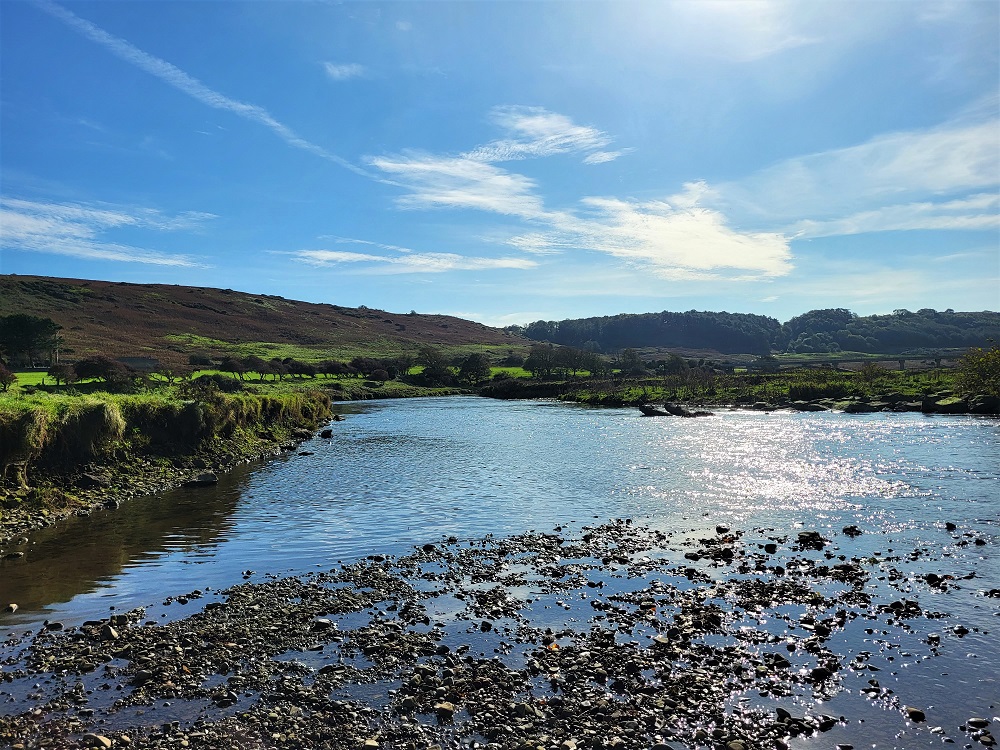
As I got to the River Ogmore, I found the woman and her horse waiting for me as they wanted to make sure I got across safely.
I waded through the cold, thigh-deep water accompanied by the woman on horseback and made it to the other side with ease, where I thanked the woman profusely for her help.
As I got out the water, I was amused to find a family approaching and having seen me cross, the Dad decided to march his less-than-impressed, inappropriately-dressed family across the river.

The woman rode off and I followed the path along the river in the direction of Ogmore Castle.
Passing the castle, I continued on my merry way until I reached a footbridge over the River Ogmore, which took me back to the car park at Merthyr Mawr.
I really enjoyed my walk around the sand dunes of Merthyr Mawr, impromptu river wade and all. It’s a ridiculously beautiful walk and there’s lots to see along the way, too.
Tips
- I parked for free in the small car park at Merthyr Mawr (it only holds around 10 cars), but the car park at Candleston is much bigger. Bear in mind, you have to pay for parking at Candleston.
- The only facilities along the way are at Candleston car park, where you’ll find a small toilet. There was also a mobile coffee van selling drinks and cakes the day I visited.
- While I happily waded through the river, I wouldn’t recommend doing so if the river was any higher, the weather was bad, you were alone or you weren’t dressed appropriately with sturdy waterproof hiking shoes. The river was considered shallow when I waded through (it was thigh high), it was slippery and uneven underfoot, and the water was freezing, despite it being a good 20+℃ outside.
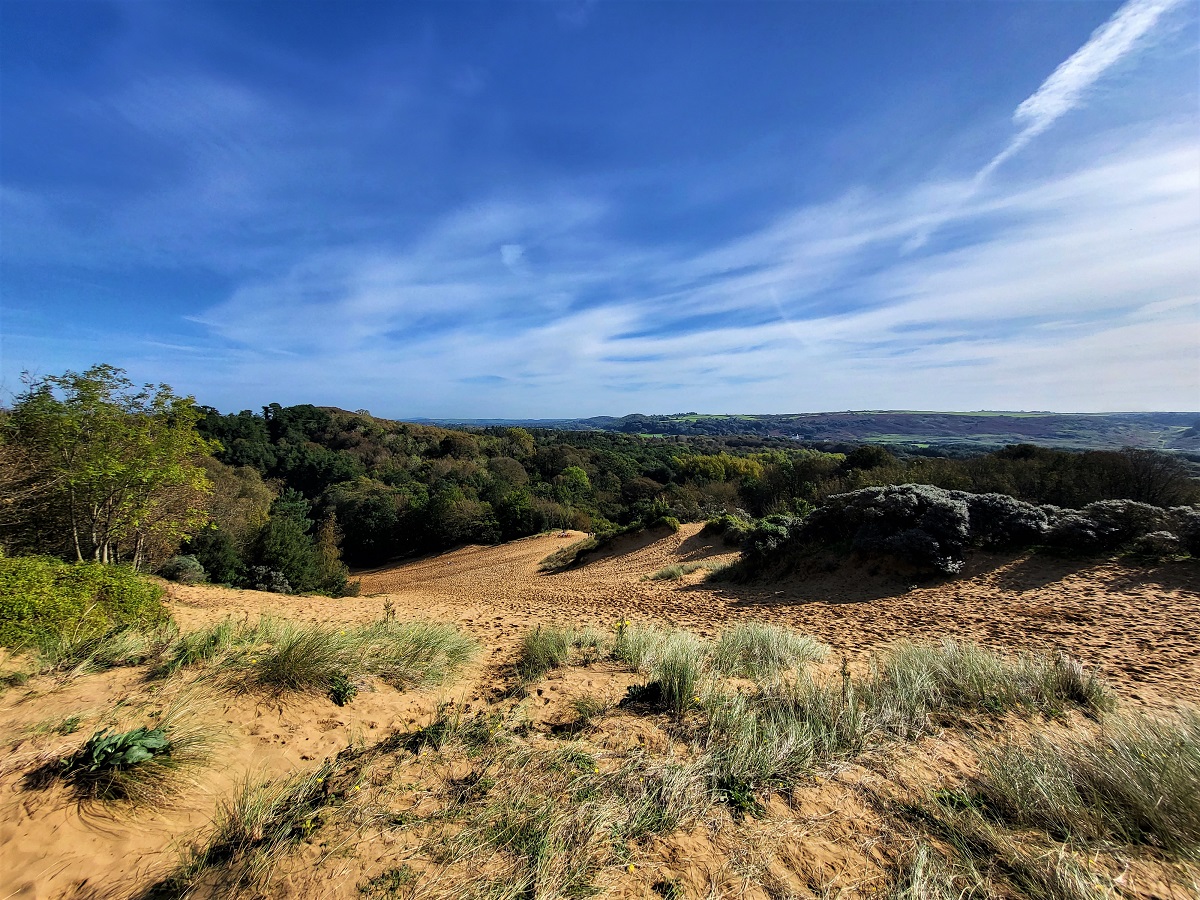
During the trip around south and north Wales, we visited many castles and castle ruins, but never made it to Candleston Castle. I love castles but I love ruins even more as I get to walk around the interior discovering its fireplaces, kitchen area, windows and solar, and getting a real sense of the fortified home. It’s very easy to imagine the hustle and bustle of a busy kitchen as the lords in their finery return home. Thanks for sharing, and have a good day 🙂 Aiva xx
LikeLiked by 1 person
Thanks Aiva. There are lots of ruins like Candleston hidden in the Welsh countryside, if you know where to look. I also love walking around and imagining what the castles must have looked like during their heyday and what it must have been like to live there. Have a great day, too 🙂
LikeLiked by 1 person
Now that’s an interesting castle ruin to explore, covered in vines and vegetation. I like the picture of Ogmore castle too. Maggie
LikeLiked by 1 person
Thanks Maggie. I wasn’t expecting the castle to be covered in so much vegetation or for there to be so much to explore, so it was a great surprise. It was a lot of fun to look around.
LikeLiked by 1 person
Two castles, a beach, and a nature reserve – that’s a good value walk! It all looks lovely but I think I’d have balked at having to wade across the river.
LikeLiked by 1 person
Thank Anabel. The walk packed a lot in. I knew I was only around 10 minutes or so from my destination and if I hadn’t waded across the river I would have had an hour-long trek back the way I came, so I decided to chance the river. If it had been much deeper, I would have turned back.
LikeLiked by 1 person
What a beautiful walk to join you on! I love that it has a little of so many views. But those ruins are incredible! Looking forward to seeing more of Wales with you 🙂 –Meg
LikeLiked by 1 person
Thanks Meg 🙂 It was a lovely walk with lots of fun, interesting things to see along the way.
LikeLiked by 1 person
This hike looks like it has it all. The scenery is spectacular and there are quite a few points of interest along the way. The castle ruins look so enchanting.
LikeLiked by 1 person
Thank you, it was a wonderful walk and the scenery was so pretty. The castle was fabulous and so much fun to explore.
LikeLiked by 1 person
What a lovely walk and you had a great weather. Photos are gorgeous and so many nice things to see. I would have love this walk 😊.
LikeLiked by 1 person
Merci Mélodie 🙂 It was a fantastic walk as there was so much to see. I was really lucky with the weather, it was like a summer’s day in October.
LikeLiked by 1 person
hi there, lovely to read your account of this walk. We are hoping to do similar on Sunday – has anyone been recently and is there much mud – around the river area or in the woods? Many thanks for your steer on this 🙏
LikeLiked by 1 person
Hi Denise, thanks for commenting. I haven’t been to Merthyr Mawr for a few months, but I’ve been on lots of other walks all around south Wales recently and they’ve all been really muddy. I’d be prepared for mud.
LikeLike